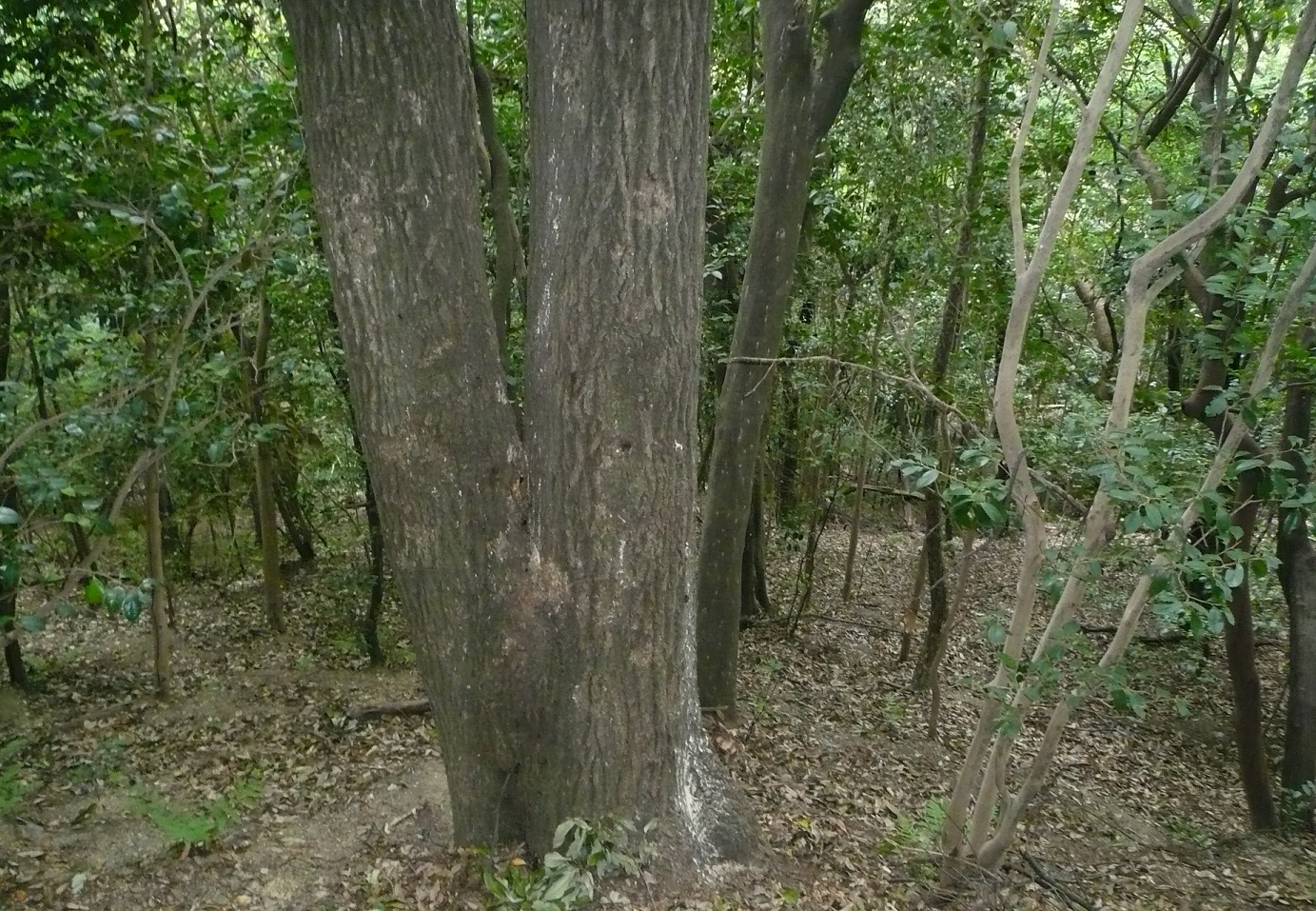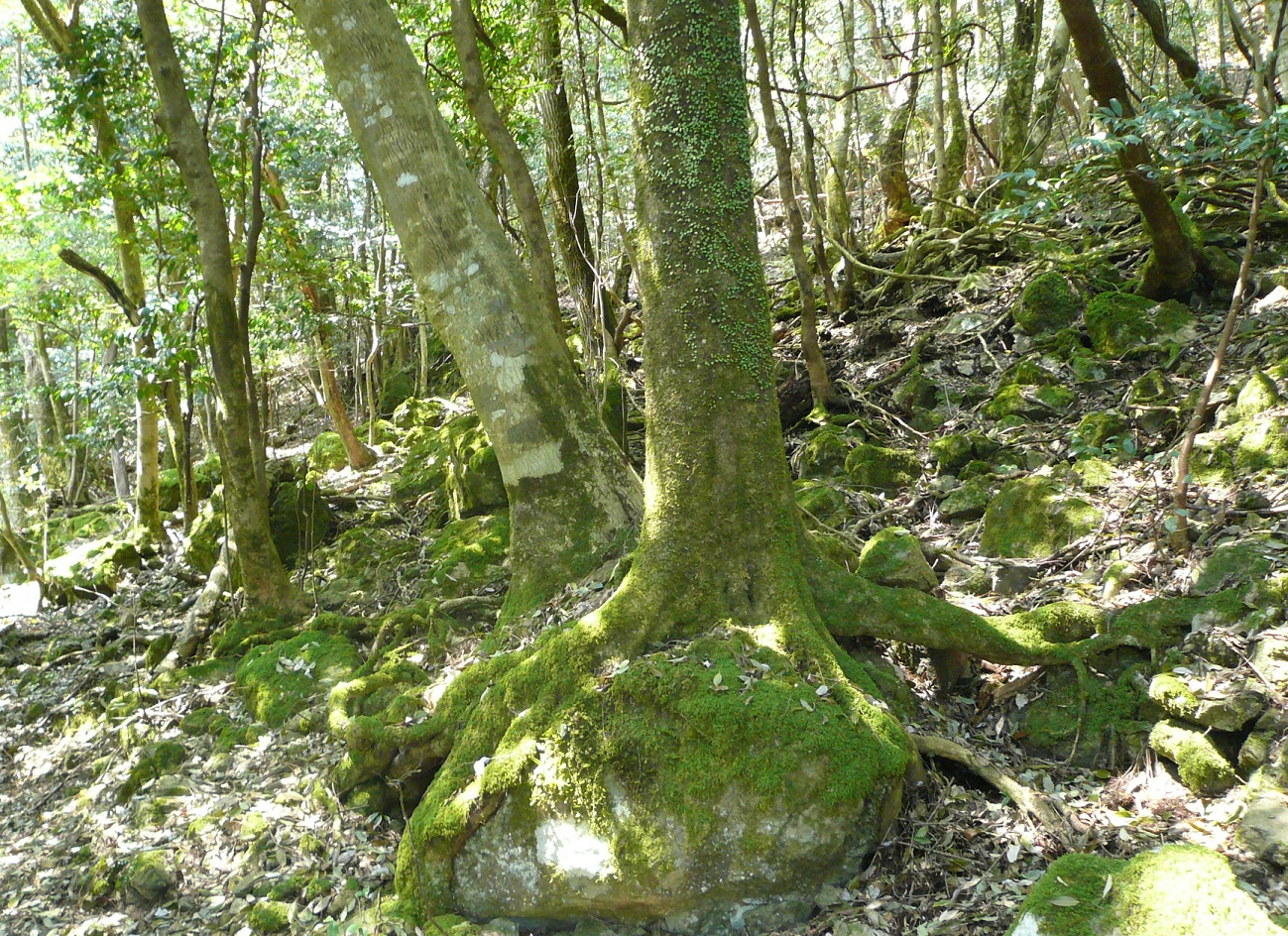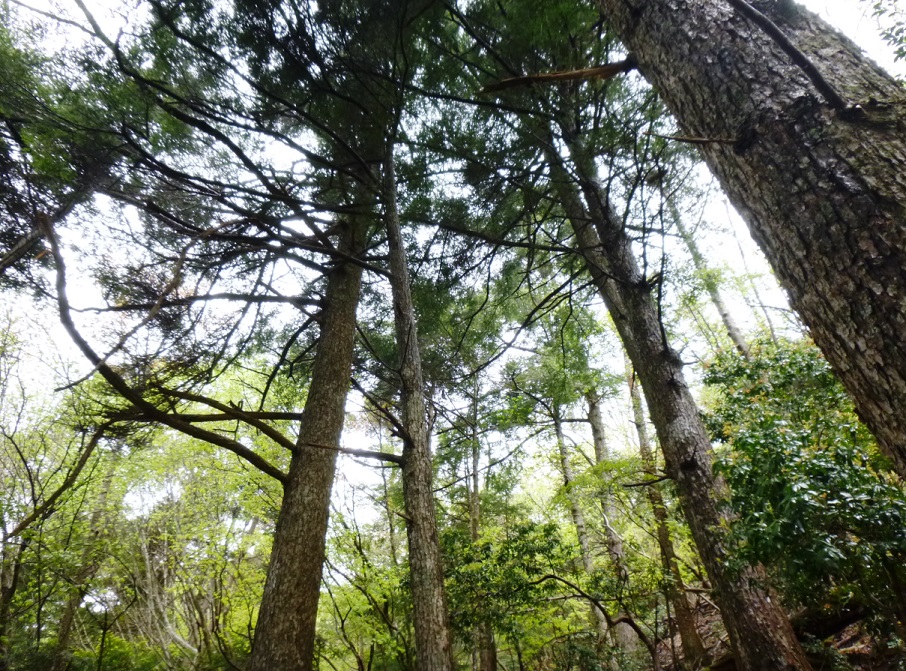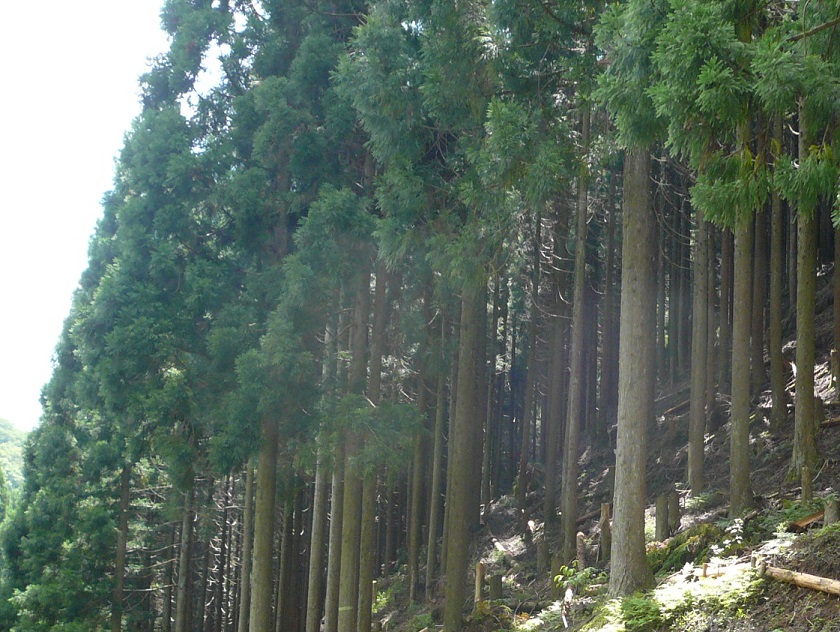Top > Ecosystem Overview
 Ecosystem Overview
Ecosystem Overview
One feature of vegetation in Kyoto Prefecture is its broad-leaved forest zone reaching up to about 500 m above sea level. This zone contains seashores, lowlands, hills, and low mountains, on which communities of oaks occur. In areas higher in altitude than the broad-leaved forest zone, thermophilic broad-leaved forest zones exist, in which communities of beech and blue beech grow. Vegetation that occurs in the subalpine and higher altitude zones does not exist in the mountainous areas of Kyoto Prefecture, which does not exceed altitudes of 1,000 m above sea level. Incidentally, in inland climate areas, which are believed to be intermediate-temperate zones, communities of fir, cypress, and cedar trees occur. In addition to the original native vegetation, as explained above, second-growth forests comprising communities of Quercus serrata and sawtooth oaks, planted forests of cedar and cypress, and Moso bamboo forests typically occur typically in satoyama areas under the influence of human settlement and deforestation.

Japanese beech community (Omiya-cho, Kyotango City)

Japanese chinquapin community
(Yawata City)

Ring-cup oak community
(Oe-cho, Fukuchiyama City)

Japanese fir community
(Keihoku, Ukyo-ku, Kyoto City)

Natural Japanese cypress community
(Kumogahata, Kita-ku, Kyoto City)

Natural Japanese cedar community
(Keihoku, Ukyo-ku, Kyoto City)

Japanese cedar plantation
(Kumogahata, Kita-ku, Kyoto City)

Moso bamboo community
Top > Ecosystem Overview
Contact: Kyoto Prefecture Department of the Environment
Nature and Environmental Conservation Division
Tel 075-414-4706 FAX 075-414-4705
e-mail: [email protected]
〒602-8570 Yabunouchi-cho, Nishiiru, Shinmachi, Shimodachiuri-dori, Kamigyo-ku, Kyoto-shi
